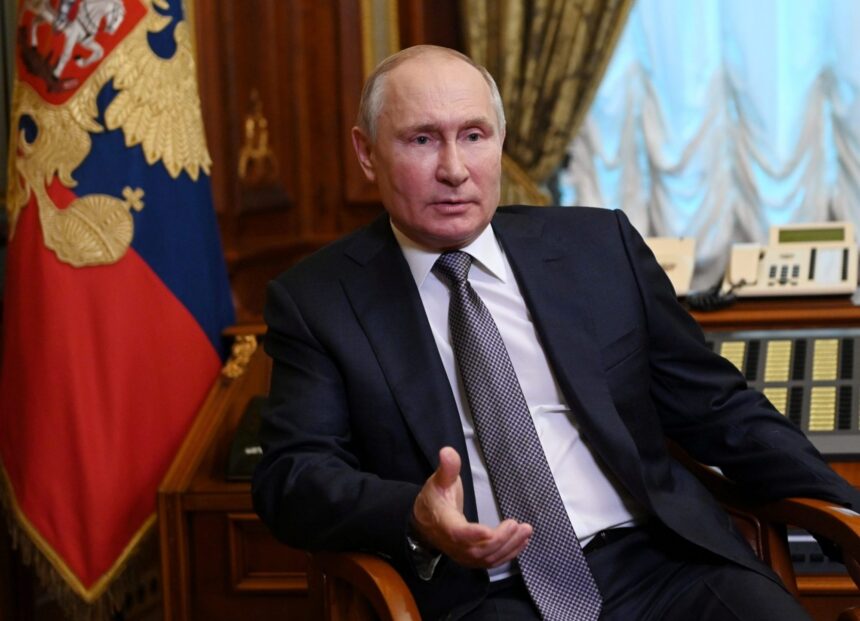Recent intelligence reports suggest that Russian President Vladimir Putin may be adjusting his immediate goals in the ongoing war in Ukraine. According to multiple sources, Putin’s focus appears to have shifted from the long-term objective of seizing all of Ukraine to prioritizing the stabilization of territory already under Russian control and boosting his country’s faltering economy. This change in strategy has significant implications for the conflict and global negotiations.
1. A Shift in Military Strategy

Earlier US and Western intelligence assessments indicated that Putin was confident in the momentum of the war and had the manpower to continue pushing for total control of Ukraine. However, new insights suggest that he may now be considering a more practical approach—solidifying control over territories already seized by Russian forces. This change may reflect a growing realization that further territorial gains are becoming increasingly difficult due to Ukraine’s resilience and strong international support.
2. Economic Pressures and Internal Struggles
Russia’s economy has been under strain due to ongoing sanctions, making it harder for Putin to maintain the war effort. The shift in strategy could be an attempt to consolidate resources and focus on strengthening Russia’s economic position. With many experts predicting long-term economic hardships for Russia, Putin may be aiming for a more sustainable approach that allows him to focus on internal stability rather than aggressive expansion.
3. The Role of Negotiations and Peace Talks

Negotiations have taken center stage in the conflict, with President Donald Trump and his administration suggesting that Putin may be more open to a peace deal than previously thought. However, skepticism remains among senior US officials who doubt that Putin is negotiating in good faith. Many believe that while Russia might agree to a temporary ceasefire or a peace deal, Putin’s long-term objective remains to expand Russia’s influence in Ukraine and beyond.
4. The Possibility of Territorial Swaps
In recent discussions, the concept of territorial swaps has been floated, where Ukraine could potentially cede parts of its territory to Russia in exchange for a ceasefire. However, this proposal has met with resistance, particularly from European allies who are alarmed by the prospect of legitimizing Russia’s territorial conquests. US officials have suggested that a peace deal could be on the table, but the details—especially concerning the recognition of Crimea and other seized territories—remain contentious.
5. Putin’s Long-Term Objectives
Despite the evolving focus on short-term goals, many analysts argue that Putin’s ultimate ambitions remain unchanged: to restore Russian dominance over Ukraine and other former Soviet territories. His references to “historical” Russian lands suggest that the conflict may only be paused, not fully resolved. Putin’s long-term strategy likely involves leveraging a mix of military, economic, and political pressure to achieve his maximalist goals.
“We understand that Washington is willing to achieve a quick success in this process,” Putin spokesman Dmitry Peskov responded on Wednesday. “But at the same time, we hope for an understanding that the settlement in the Ukrainian crisis is too complicated to be done overnight. There are lots of details and lots of tiny things to be tackled before a settlement.”
Trump had referenced recent Russian strikes on Kyiv and elsewhere that the senior western intelligence official said are in line with the argument that Putin is not engaging in truce talks with an intention of ending the war.
“But if something gets put on the table that is too good to pass up, I think that they could change the way they’re thinking a little bit on that,” said the official.
Conclusion: The Path Ahead
The shift in Putin’s goals represents a new phase in the Russia-Ukraine conflict. While the immediate focus may be on consolidating power and stabilizing the economy, the underlying strategic objectives remain intact. The coming months will be crucial in determining whether a lasting peace deal can be reached or if the war will escalate once again. For now, the international community remains wary of Russia’s true intentions, as negotiations continue to unfold.
Next Steps: Stay updated on the latest developments in the Russia-Ukraine conflict and the potential for peace talks to reshape the geopolitical landscape.









